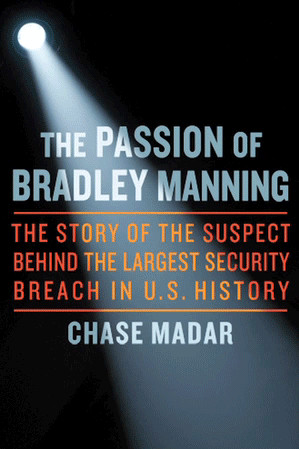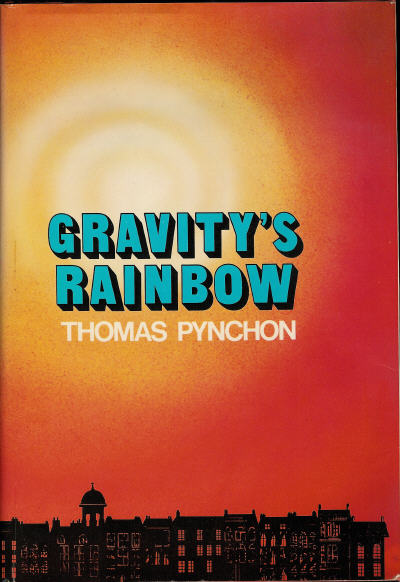Joseph Needham, et al.: Science and Civilisation in China, 7 vols. (1954–2008)
Filed under book | Tags: · acoustics, agriculture, alchemy, astronomy, biology, botany, cartography, ceramics, chemistry, china, electricity, engineering, food, geography, history of mathematics, history of science, history of technology, language, light, logic, magnetism, mathematics, medicine, metallurgy, military, mining, optics, paper, physics, print, science, sericulture, sound, technology, textile

“Science and Civilisation in China is recognised as one of the most remarkable works of scholarship in the twentieth century. Originally proposed as a single volume of 600 to 800 pages, the project now encompasses seventeen books published under the direct supervision of Joseph Needham, from the first volume which appeared in 1954, through to volume 6.3 which was in press at the time of his death in 1995. The preparation and publishing of further volumes is ongoing. Responsibility for the commissioning and approval of work for publication in the series is now taken by the Publications Board of the Needham Research Institute, under the chairmanship of Dr C. Cullen, who acts as general editor of the series.”
The published volumes reflect Needham’s vision of the field of the history of science and its social background in China, and his aim to make Chinese achievements in science and technology better understood. The series was on the Modern Library Board’s 100 Best Nonfiction books of the 20th century.
Publisher Cambridge University Press
Review (Robert Finlay, Journal of World History, 2000)
Review (Marta E. Hanson, Early Science and Medicine, 2007)
Simon Winchester on Joseph Needham, video, 57 min (via अवनिचर अवनिचर)
wikipedia
publisher
Needham Research Institute
Vol. 1: Introductory Orientations, With the Research Assistance of Wang Ling, 1954
Vol. 2: History of Scientific Thought, With the Research Assistance of Wang Ling, 1956
Vol. 3: Mathematics and the Sciences of the Heavens and Earth, With the Collaboration of Wang Ling, 1959
Physics and Physical Technology
Vol. 4-1: Physics, With the Collaboration of Wang Ling; and the Special Co-operation of Kenneth Robinson, 1962
Vol. 4-2: Mechanical Engineering, With the Collaboration of Wang Ling, 1965
Vol. 4-3: Civil Engineering and Nautics, With the Collaboration of Wang Ling and Lu Gwei-Djen, 1971
Chemistry and Chemical Technology
Vol. 5-1: Paper and Printing, By Tsien Tsuen-Hsuin, 1985
Vol. 5-2: Spagyrical Discovery and Invention: Magisteries of Gold and Immortality, With the Collaboration of Lu Gwei-Djen, 1974
Vol. 5-3: Spagyrical Discovery and Invention: Historical Survey, from Cinnabar Elixirs to Synthetic Insulin, With the Collaboration of Ho Ping-Yü and Lu Gwei-Djen, 1976
Vol. 5-4: Spagyrical Discovery and Invention: Apparatus, Theories and Gifts, With the Collaboration of Ho Ping-Yü and Lu Gwei-Djen; and a Contribution by Nathan Sivin, 1980
Vol. 5-5: Spagyrical Discovery and Invention: Physiological Alchemy, With the Collaboration of Lu Gwei-Djen, 1983
Vol. 5-6: Military Technology: Missiles and Sieges, With Robin D.S. Yates, Krzysztof Gawlikowski, Edward McEwen, Wang Ling, 1994
Vol. 5-7: Military Technology: The Gunpowder Epic, With the Collaboration of Ho Ping-Yü (Ho Peng Yoke), Lu Gwei-Djen, and Wang Ling, 1987
Vol. 5-8: Not yet published
Vol. 5-9: Textile Technology: Spinning and Reeling, By Dieter Kuhn, 1988
Vol. 5-10: Not yet published
Vol. 5-11: Ferrous Metallurgy, By Donald B. Wagner, 2008
Vol. 5-12: Ceramic Technology, By Rose Kerr and Nigel Wood; With Contributions by Ts’ai Mei-fen and Zhang Fukang; Edited by Rose Kerr, 2004
Vol. 5-13: Mining, By Peter J. Golas, 1999
Biology and Biological Technology
Vol. 6-1: Botany, With the Collaboration of Lu Gwei-Djen, and a Special Contribution by Huang Hsing-Tsung, 1986
Vol. 6-2: Agriculture, By Francesca Bray, 1984
Vol. 6-3: Agro-Industries and Forestry, By Christian A. Daniels and Nicholas K. Menzies, 1996
Vol. 6-4: Not yet published
Vol. 6-5: Fermentations and Food Science, By Huang Hsing-Tsung, 2000
Vol. 6-6: Medicine, With the Collaboration of Lu Gwei-Djen; Edited and With an Introduction by Nathan Sivin, 2000
Vol. 7-1: Language and Logic, By Christoph Harbsmeier; Edited by Kenneth Robinson, 1998
Vol. 7-2: General Conclusions and Reflections, With the Collaboration of Kenneth Robinson and Ray Huang (Huang Jen-Yu); With an Introduction by Mark Elvin; Edited by Kenneth Robinson, 2004
(PDFs removed on 2019-5-15 and 2019-6-21 upon request from publisher)
Comments (4)Chase Madar: The Passion of Bradley Manning (2012)
Filed under book | Tags: · biography, intelligence agency, law, leaking, military, security, whistleblowing, wikileaks

“In May 2010, an intelligence analyst in the US Army’s 10th Mountain Division was arrested on suspicion of leaking nearly half a million classified government documents, including the infamous “Collateral Murder” gunsight video and 260,000 State Department cables. After nine months in solitary confinement, the suspect now awaits court-martial in Fort Leavenworth. He is twenty-four, comes from Crescent, Oklahoma and his name is Bradley Manning.
Who is Private First Class Bradley Manning? Why did he allegedly commit the largest security breach in American history–and why was it so easy? Is Manning a traitor or a whistleblower? Is long-term isolation an outrage to American values–or the new norm? Are the leaks revolutionary or a sensational nonevent? Which is the greater security threat, routinized elite secrecy or flashes of transparency? And what impact does new information really have?
The astonishing leaks attributed to Bradley Manning are viewed from many angles, from Tunisia to Guantánamo Bay, from Foggy Bottom to Baghdad to small-town Oklahoma. Around the world, the eloquent alleged act of one young man obliges citizens to ask themselves if they have the right to know what their government is doing.”
Publisher OR Books, April 2012
ISBN 1935928538, 9781935928539
190 pages
United States v. Bradley Manning (Wikipedia)
1.5-hour special broadcast on the Bradley Manning verdict (Democracy Now!, 30 July 2013)
Table detailing verdict in Bradley Manning trial (AlexaOBrien.com)
Thomas Pynchon: Gravity’s Rainbow (1973-) [EN, IT, HU]
Filed under fiction | Tags: · colonialism, conspiracy, entropy, military, sex, synchronicity, war

A few months after the Germans’ secret V-2 rocket bombs begin falling on London, British Intelligence discovers that a map of the city pinpointing the sexual conquests of one Lieutenant Tyrone Slothrop, U.S. Army, corresponds identically to a map showing V-2 impact sites. The implications of this discovery launch Slothrop on a wildly comic extravaganza.
“Gravity’s Rainbow is Pynchon’s most celebrated novel. An intricate and allusive fiction that combines and elaborates on many of the themes of his earlier work, including preterition, paranoia, racism, colonialism, conspiracy, synchronicity, and entropy, the novel has spawned a wealth of commentary and critical material, including reader’s guides, books and scholarly articles, online concordances and discussions, and art works. Its artistic value is often compared to that of James Joyce’s Ulysses. Some scholars have hailed it as the greatest American post-WW2 novel, and it has similarly been described as ‘literally an anthology of postmodernist themes and devices’.” (from Wikipedia)
A Journey Into the Mind of P, documentary on Pynchon (dir. Donatello Dubini & Fosco Dubini, 2002, 88 min)
Gravity’s Rainbow (English, 2000, EPUB)
Gravity’s Rainbow (English, undated, PDF, unpaginated)
L’arcobaleno della gravità (Italian, trans. Giuseppe Natale, 1999, no OCR, 82 MB), (OCR’d, unpaginated)
Súlyszivárvány (Hungarian, trans. János Széky, 2009, unpaginated)

